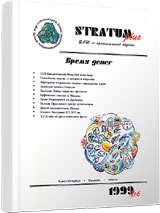Столниченский клад: культурно-хронологическая интерпретация монет типа Хушь-Вовриешть
Stolniceni Hoard: Cultural and Chronological Interpretation of Coins of Huşi-Vovrieşti Type
Author(s): Alexandru LevinschiSubject(s): History, Archaeology, Political history, Ancient World
Published by: Издательский дом Stratum, Университет «Высшая антропологическая школа»
Summary/Abstract: A hoard of the ancient silver coins was found on the Getian settlement of Stolniceni in the summer of 1996. The hoard contained 44 drachmas of Histria and 10 tetradrachmas of Huşi-Vovrieşti type. Of these coins, twelve Histrian drachmas, dated within IV c. B. C., and four tetradrachmas, usually dated by the end of III c. B. C. and not earlier, came to the Moldavian National Museum of History. A detailed analysis of the findings in the hoard and the context in which these were found, allow a conclusion that the coins of Husi-Vovriesti type are imitations of Philippe II’s tetradrachmas of the first series, and thus they can be dated by the second half of IV c. B. C. The area of imitations of the first series without the cuts embraces the region of the Triballs’s domination (by M. E. Tkachuk). They were the ones that minted the coins. The Getians, who were politically dependent of the Triballs, would cut the coins to check the quality of silver or accept them for circulation in their own area. The tetradrachmas of Huşi-Vovrieşti type were the «national» coin of the Getians at most till the Bastarns appeared in the lands to the East of the Carpathians.
Journal: Stratum plus. Археология и культурная антропология
- Issue Year: 1999
- Issue No: 6
- Page Range: 92-99
- Page Count: 8
- Language: Russian

